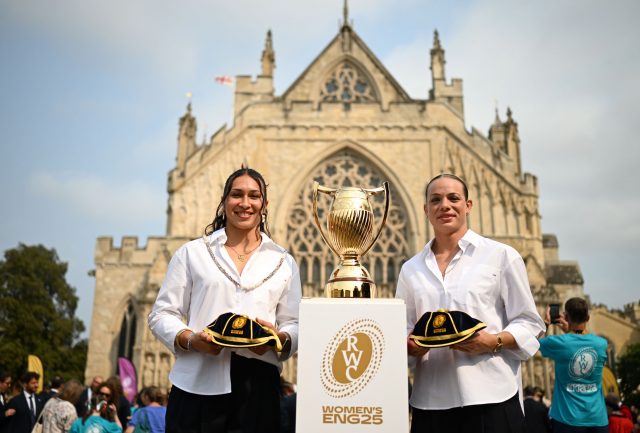Part One – Preliminaries and Structures
This topic is so vast that you could write a book about it. You could, but I’ll restrict myself to a series of topics.
This was the tenth of the series and the second to be held in England. From the start the organisers, backed by World Rugby, the RFU and the UK government (no less!), decided above all to be ambitious.
The people who mattered most were the organising committee, led by Sarah Massey, the MD, and Yvonne Nolan, the Competition Director.
Their work turned into a monumental success. Almost every record you can think of was broken. Crowds increased beyond most people’s imaginings; viewers on TV and live stream grew exponentially. If, post-tournament, you attempted to watch and listen to all the blogs and vlogs, interviews, discussions and one-person opinions made public, you might not be able to stand up and walk again.
The Build-up
Advance publicity was carefully handled. Every so often we learned of the number of tickets already sold. They took our breath away, and went on climbing.
A lucky few could spot a poster on London Underground stations featuring Jess Breach.
People with no interest in women’s rugby were being made aware of the coming event.
Structure
WR saw it as vital to increase the number of competing nations to 16. This was a risky step as it made unequal games inevitable. But that had been the story at every preceding RWC. The scoffers had their say.
The justification came with the way the minnows, Brazil, Fiji and Samoa, reacted. They sang, danced and smiled. They were overjoyed just to be there.
The Red Roses, having put 92 points on the Manusina, found themselves joining in a dance mid-pitch.
Schedules
Matches were set for weekends only. That would allow players proper time for rest and recuperation, and it ensured more people would be free to attend.
It was decided to hold a big premiere on a Friday evening, ahead of the other Round One matches . One team had to be the Red Roses; the draw determined their opponents would be the USA. The next question was, where?
Venues
The organisers learned from New Zealand’s experience in 2022. There,4 matches had been limited to a small region in the far north.
This time the grounds chosen would cover a vast expanse of England. One problem was the lack of rugby stadiums big enough to suit the planners’ purpose; only Twickenham could house more than 30,000. Hence the use of football grounds.
Sunderland’s Stadium of Light was the unlikely choice for the opening night, slap bang in the middle of football territory. It turned into the first huge success. Attendance: 42,723. That was already the highest figure for any women’s rugby match.
From there in the north-east matches were to stretch right down to Exeter in the south-west. The organisers claimed no-one would need to travel more than two hours to see a match.
Media coverage
It was on a more massive scale than anything previously known. In the UK the BBC had obtained the prized contract. That meant free-to-air TV would ensure the biggest viewing figures.
Nations around the world obtained their own access.
Welcome

Exeter Cathedral Photo: Harry Trump – World Rugby/World Rugby via Getty Images
Each national squad was given a special welcome in a special place. Bigwigs were on hand to make speeches; every player was given a special RWC cap which she wore for a smiling official photo.
The French, no strangers to English shores, were highly impressed by their welcome, inside and outside Exeter Cathedral.
This was a great start.
Curtain up!









